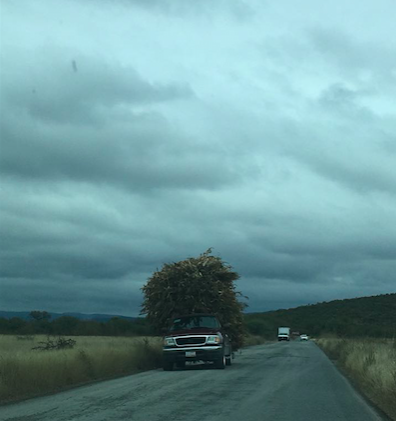Noviembre 20, 2018
What does Climate Change have to do with Migration?

A Modern Exodus
Thousands of people are risking everything on an uncertain voyage. The first contingent of refugees that fled San Pedro Sula, Honduras was made up of children, elders, and everyone in between - united in their desperate need to seek security outside their home. Other groups have since begun the long trek north, coming from diverse countries and threats. Media reports emphasize that the migrants are fleeing violence, poverty, and organized crime. However, there is another threat that is also pushing even more people to seek asylum: climate change.
What is climate change?
Climate change is a complex topic, both scientifically and politically speaking. In short, the phrase refers to the changes in weather and seasons caused by the large amount of carbon that fossil fuel-burning industries have emitted into the atmosphere. The changes vary depending on the geographic region, and some report that Central America is the one of the regions most severely impacted by the phenomenon. The most significant changes in the region include strong rains and resulting floods, as well as excessive heat and lack of precipitation during normal rainy seasons. More than anything, the lengths of seasons are changing without explanation. These factors make it practically impossible to plan for the coming year.
What is the relationship between climate change and migration?
Because climate change is hitting Central America so quickly, there is not time to adjust to this new climate reality - especially not for those who work in the fields. One third of Central American work depends on agriculture, which means that the entire region is vulnerable to the effects of climate change on the crops that sustain them. Collaborative reporting of El Diario and the Guardian recently confirmed that variations in temperature and rainfall have contributed to recent displacement and migration, specifically from Honduras and Guatemala. Although the relationship between climate and crops is not always clear, what is clear is that agriculture is directly impacted by any changes in the former.
For example, less than a decade ago, it was possible to make a good living growing coffee in Honduras. The western region of the country is still one of the principal producers of coffee in the world. However, according to Honduras members of the migrant caravan, it is no longer possible to survive that way. The U.S. Customs and Border Protection has also confirmed the large increase in migration from this previously thriving región. In the case of coffee, the effect of climate change is mainly seen in the growth of a fungus that attacks and kills the crop. Previously, temperatures dropped sufficiently at night for the fungus to die off each evening. Now, with temperatures consistently warmer day and night, the fungus has the opportunity to keep growing. This has resulted in the loss of many crops and the need for many to migrate.
What is going to happen now regarding refugees and climate change?
Unfortunately, there is no guarantee that refugees of climate change, or of the poverty and instability that it produces, will receive the asylum they seek in the states. The current asylum laws that the majority of countries use have a very limited definition of the term “refugee.” The criteria recognized by these countries include persecution for reasons of race, religion, nationality, or belonging to a particular social group. Climate change is not recognized as a legitimate reason for seeking asylum, although it is one of the biggest drivers of migration.
What can be done to improve the coverage of these laws?
There is a growing wave of support for laws that account for climate change as a basis for granting asylum. However, according to experts, it is not likely that international asylum laws will change for the better in this political climate. For now, the best thing to do is to educate the general public about the effects of climate change on migration around the world. The current caravans are just the beginning of many more people who should be considered refugees of this climate phenomenon.
